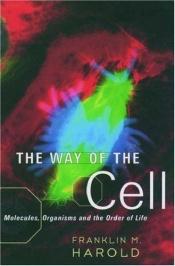The Way of the Cell
Über
"What is life?" asked physicist Edwin Schrödinger in an influential essay by that title published half a century ago. In this book, Franklin Harold ventures no definitive answers about what he calls "the supreme marvel of the universe." Instead, with wit and learning, he surveys the advances in scientific understanding about the nature of life since Schrödinger's time.Harold focuses closely on microorganisms, which, he observes, do not often figure in popular books of biology, perhaps because most general readers associate them only with disease and not with their many beneficial contributions to the world's workings. In fact, he suggests, the answer to Schrödinger's question is likely to be found at the microscopic level. Current evolutionary models derived from the study of ribosomal RNA from hundreds of species of plants and animals now point to the development of life from some cenancestor in a setting billions of years old, one in which "microorganisms rather than dinosaurs fill the horizon." The identity of that ancestor is not yet known, he writes; it may have resembled a bacterium, or it may have been a loosely organized assemblage of protocells "engaged in the promiscuous exchange of genetic information."
No matter what it looked like, Harold notes in this instructive survey of modern biological theory, life probably originated in an apparently inhospitable environment, as studies of deep-ocean thermal vents and the lithosphere now point to, rather than in the oceanic "chemical stew" of old. It's a fascinating story, and Harold tells it ably. --Gregory McNamee

 Deutsch
Deutsch English
English Español
Español





![Zufall und Notwendigkeit. Philosophische Fragen der modernen Biologie [Le Hasard et la Nécessité].](/images/cover/.tmb/thumb_3492019137-L_60_100.jpg)




Mitglieder-Rezensionen Eigene Rezension schreiben
Schreibe die erste Rezension
Zum Kommentieren bitte Anmelden